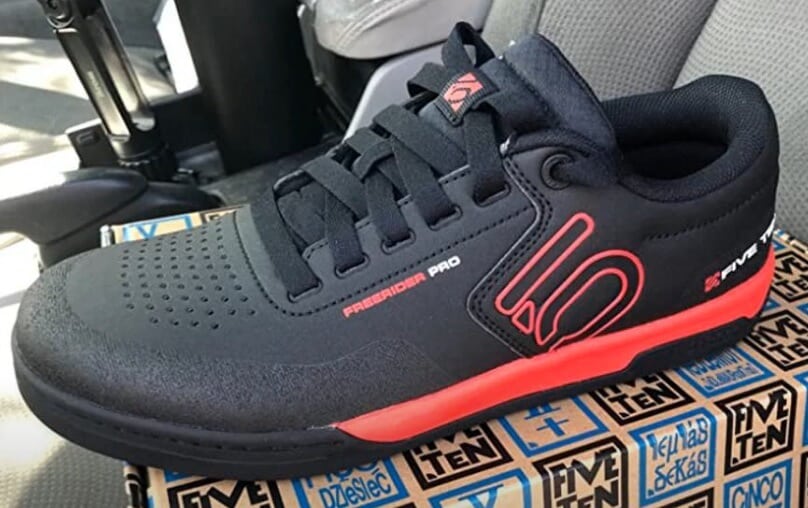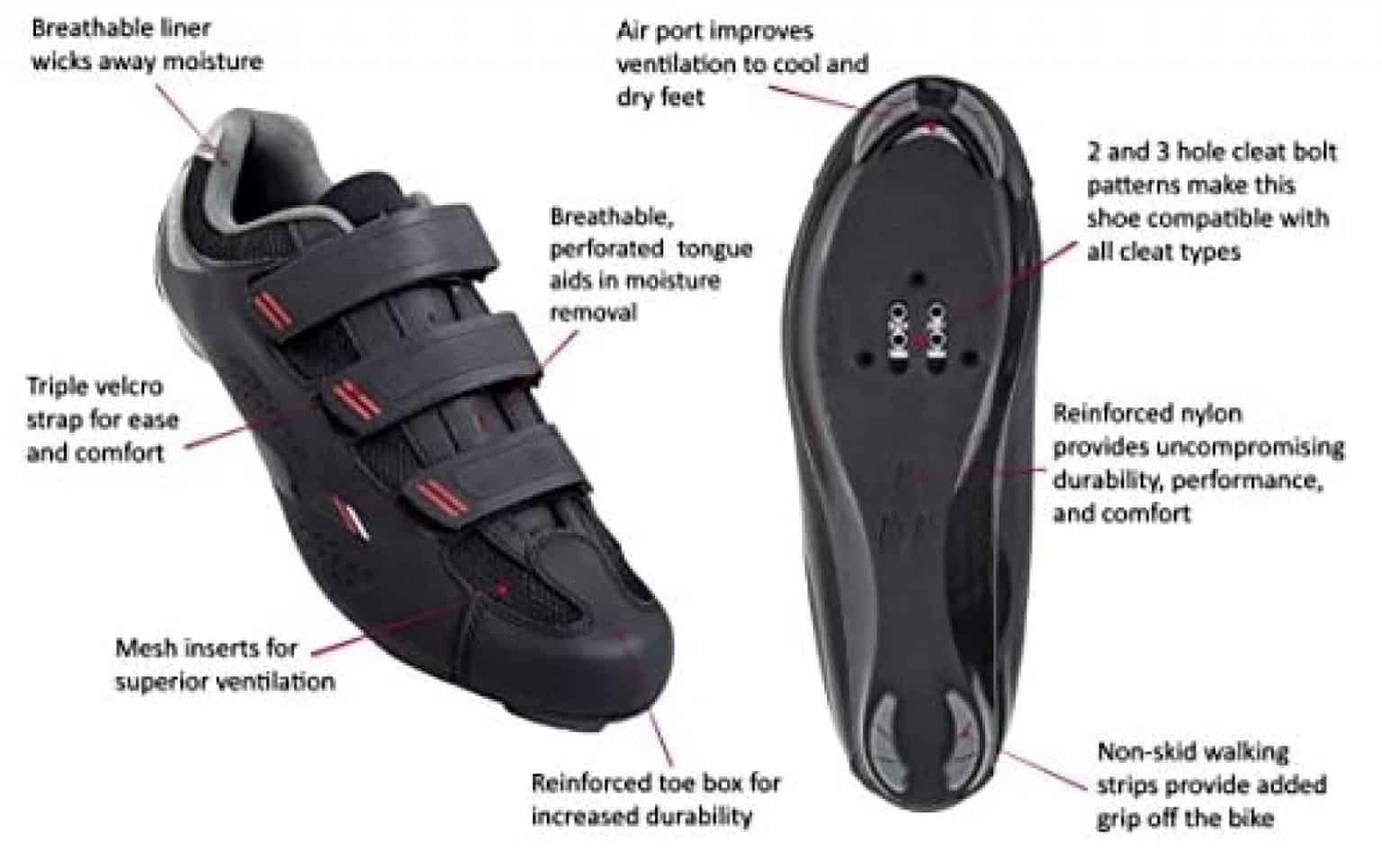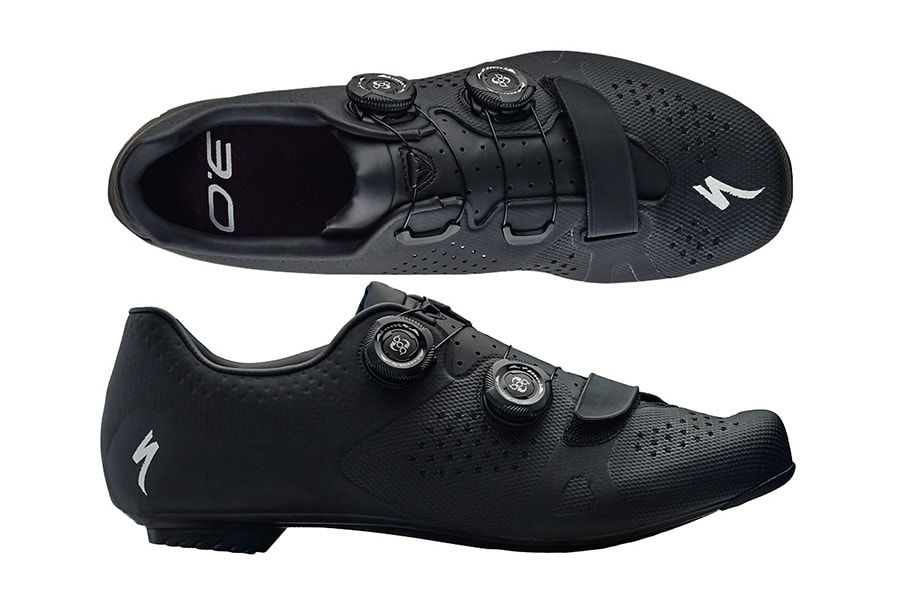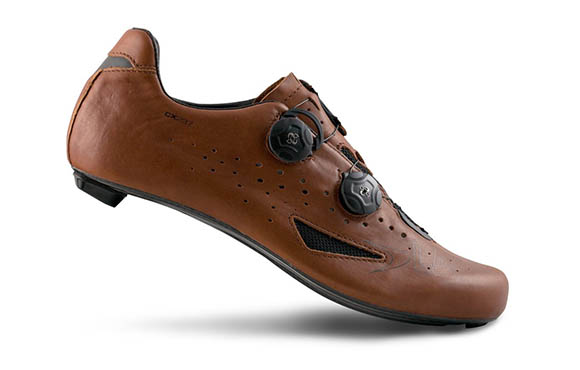The Art of Selecting Comfortable Cycling Shoes: A Buyer’s Guide
When it comes to cycling, comfort is paramount. Wearing the right pair of cycling shoes can significantly enhance your riding experience, making it more enjoyable and efficient. This comprehensive guide will help you navigate the process of selecting the most comfortable cycling shoes for your needs.
Selecting the perfect cycling shoes involves several factors. First and foremost, the fit is crucial. Ill-fitting shoes can lead to discomfort, blisters, and even injuries. It is essential to consider the length and width of your feet when choosing cycling shoes. A proper fit ensures that your feet are snugly held in place, reducing the risk of friction and enhancing power transfer.
Closure systems are another vital aspect to consider. Different systems, such as laces, BOA, and ratchets, offer varying levels of adjustability, comfort, and ease of use. For instance, BOA dials provide quick and precise adjustments, while laces offer a more traditional and customizable fit. The best closure system for you depends on your personal preferences and riding style.
Breathability and stiffness are also essential factors to consider when selecting comfortable cycling shoes. Breathable shoes help regulate foot temperature, preventing overheating and discomfort during long rides. Stiffness, on the other hand, affects pedaling efficiency. While stiffer shoes generally offer better power transfer, they may compromise walkability and comfort. Balancing these factors is key to finding the most comfortable cycling shoes for your needs.
Understanding the Anatomy of Cycling Shoes: A Closer Look
To make an informed decision when purchasing the most comfortable cycling shoes, it is crucial to understand the various components that contribute to their overall performance and comfort. Cycling shoes typically consist of four primary components:
- Upper: The upper portion of cycling shoes is often made from materials such as leather, synthetic, or mesh. Each material has its unique advantages, including durability, breathability, and flexibility. The upper should fit snugly without causing discomfort, allowing for a secure and efficient pedaling motion.
- Closure System: The closure system, which includes laces, BOA dials, or ratchets, enables you to adjust the fit of your shoes. An ideal closure system should provide a precise and secure fit while being easy to use and adjust. Some systems, like BOA dials, offer quick and precise adjustments, making them popular among cyclists.
- Outsole: The outsole of cycling shoes is often made from carbon fiber, nylon, or a combination of both. A stiffer outsole generally provides better power transfer, while a more flexible outsole enhances walkability. Choosing the right balance between stiffness and flexibility depends on your riding style and preferences.
- Cleat System: Cycling shoes are designed to be used with clipless pedals, which require a cleat system to connect the shoe to the pedal. Cleat systems vary between road and mountain bike shoes, and selecting the appropriate system is essential for optimal pedaling efficiency and comfort.
By understanding the anatomy of cycling shoes, you can make a more informed decision when selecting the most comfortable cycling shoes for your needs. Each component plays a vital role in ensuring comfort and performance, so it is essential to consider all factors when making your choice.
Top Comfortable Cycling Shoes in the Market: A Product Review
When searching for the most comfortable cycling shoes, it is essential to consider various factors, including fit, closure systems, breathability, and stiffness. Here is a curated list of the top comfortable cycling shoes available, featuring a mix of road, mountain, and casual cycling shoes.
1. Shoe Brand A – Road Comfort Cycling Shoes
These road cycling shoes offer unparalleled comfort, thanks to their anatomical design and cushioned footbed. The shoes feature a BOA closure system, ensuring a secure and adjustable fit. The upper is made from a breathable mesh material, keeping your feet cool during long rides. With a carbon outsole, these shoes provide excellent power transfer and are lightweight, making them an ideal choice for serious road cyclists.
2. Shoe Brand B – Mountain Bike Comfort Shoes
Designed for off-road adventures, these mountain bike shoes offer superior comfort and walkability. The shoes feature a ratchet closure system, allowing for easy adjustments on the fly. The upper is made from a durable synthetic material, with perforations for enhanced breathability. The recessed cleats and flexible outsole make these shoes perfect for both riding and hiking, ensuring ultimate comfort during your mountain biking adventures.
3. Shoe Brand C – Casual Comfort Cycling Shoes
For those who prefer a more casual look, these cycling shoes offer style and comfort in one package. The shoes feature laces, providing a traditional yet customizable fit. The upper is made from a combination of leather and mesh, offering both durability and breathability. The outsole features a recessed cleat system, allowing for a natural walking motion. These shoes are perfect for commuters and recreational cyclists who value comfort and style.
When searching for the most comfortable cycling shoes, consider the type of cycling you will be doing, as well as your personal preferences for closure systems, materials, and stiffness. By carefully evaluating your options, you can find the perfect pair of cycling shoes that offer both comfort and performance.
How to Achieve the Perfect Fit: A Step-by-Step Guide
Finding the most comfortable cycling shoes requires a proper fit, which can be achieved by following a few essential steps. By considering factors such as foot length and width, trying on shoes with cycling socks, and adjusting the closure system, you can ensure a comfortable and secure fit.
1. Measure Your Foot Size
To find the right size, measure both the length and width of your feet. Use a Brannock device or a measuring tape to determine the measurements accurately. Compare your measurements to the shoe manufacturer’s size chart, as different brands may have slightly different sizing.
2. Try on Shoes with Cycling Socks
When trying on cycling shoes, always wear the socks you plan to use during your rides. Cycling socks are often thicker than regular socks, which can affect the fit and comfort of the shoes. By wearing your cycling socks during the fitting process, you can ensure a more accurate fit.
3. Adjust the Closure System
Properly adjusting the closure system is crucial for a comfortable fit. Start by loosening the closure system completely, then slide your foot into the shoe. Gradually tighten the closure system until the shoe feels snug but not too tight. Ensure that there is no pressure on the top of your foot or your toes, as this can lead to discomfort during long rides.
4. Check for Lateral Movement
While wearing the shoes, check for any lateral movement. Your heel should be securely in place, and there should be minimal side-to-side movement. If you notice excessive movement, consider trying a smaller size or a different closure system.
5. Perform a Standing Test
Once you have adjusted the closure system, stand up and perform a few pedaling motions. The shoes should feel snug but not too tight. If you experience any discomfort or pressure points, readjust the closure system or consider trying a different pair of shoes.
By following these steps, you can find the most comfortable cycling shoes for your needs. Remember that a proper fit is crucial for both comfort and performance, so take the time to ensure that your shoes fit correctly.
Materials Matter: Choosing the Right Upper Material
When searching for the most comfortable cycling shoes, the upper material plays a significant role in determining comfort, breathability, and durability. Various materials, such as leather, synthetic, and mesh, offer unique advantages and disadvantages, depending on your riding conditions and preferences.
1. Leather
Leather is a popular choice for cycling shoes due to its durability and natural fit. High-quality leather molds to the shape of your foot over time, providing a custom-like fit. However, leather can be less breathable than other materials, which may lead to discomfort during long rides in hot conditions. To improve breathability, look for perforated leather uppers or combine leather with mesh panels.
2. Synthetic
Synthetic materials, such as microfiber or nylon, offer a lightweight and breathable alternative to leather. These materials are often more affordable and easier to clean than leather. Synthetic uppers can also be designed with ventilation channels or perforations to enhance breathability, making them an excellent choice for hot and humid conditions. However, synthetic materials may not provide the same level of durability as leather.
3. Mesh
Mesh materials are highly breathable and lightweight, making them an ideal choice for hot and humid conditions. Mesh uppers allow for maximum airflow, keeping your feet cool and dry during long rides. However, mesh materials may not be as durable as leather or synthetic uppers and may not provide the same level of support.
When selecting the most comfortable cycling shoes, consider the riding conditions and your personal preferences. Leather offers durability and a natural fit, while synthetic materials provide lightweight breathability. Mesh materials offer maximum breathability, making them an excellent choice for hot and humid conditions. By selecting the right upper material, you can ensure a comfortable and enjoyable riding experience.
Fasten Your Feet: Comparing Closure Systems
When searching for the most comfortable cycling shoes, the closure system plays a crucial role in ensuring a secure and adjustable fit. Various closure systems, such as laces, BOA, and ratchets, offer unique advantages and disadvantages in terms of comfort, adjustability, and ease of use. Understanding the pros and cons of each system can help you make an informed decision based on your riding style and preferences.
1. Laces
Laces are a traditional closure system that offers a high level of adjustability and customization. They can be easily tightened or loosened to achieve the perfect fit, and they are generally more affordable than other closure systems. However, laces can be more time-consuming to adjust and may become untied during rides, which can be inconvenient and potentially dangerous.
2. BOA
BOA is a popular closure system that uses a dial to tighten and loosen cables. BOA offers a precise and secure fit, with the ability to make micro-adjustments on the fly. BOA systems are also easy to use, even with gloves on, and are generally more durable than laces. However, BOA systems can be more expensive than other closure systems and may require replacement if they break.
3. Ratchets
Ratchets are a closure system that uses a buckle and a ratcheting mechanism to tighten and loosen the shoe. Ratchets offer a secure and adjustable fit, with the ability to make quick adjustments during rides. They are also generally more affordable than BOA systems and can be more durable than laces. However, ratchets may not offer the same level of precision as BOA systems and can be more challenging to adjust than laces or BOA.
When selecting the most comfortable cycling shoes, consider the closure system that best suits your needs. Laces offer a high level of adjustability and customization, while BOA systems provide a precise and secure fit. Ratchets offer a secure and adjustable fit, with the ability to make quick adjustments during rides. By selecting the right closure system, you can ensure a comfortable and enjoyable riding experience.
Stiffness vs. Flexibility: Finding the Right Balance
When searching for the most comfortable cycling shoes, it’s essential to consider the balance between shoe stiffness and flexibility. While shoe stiffness plays a crucial role in pedaling efficiency, flexibility is equally important for walkability and comfort. Understanding the relationship between stiffness and flexibility can help you select the right cycling shoes for your riding discipline and intensity.
1. Shoe Stiffness
Shoe stiffness refers to the shoe’s ability to transfer power from the pedal to the foot. A stiffer shoe generally provides better power transfer, making it an ideal choice for high-intensity rides or races. However, shoes that are too stiff can cause discomfort during long rides, especially if they lack flexibility in the toe box area.
2. Flexibility
Flexibility in cycling shoes is essential for walkability and comfort. A flexible shoe allows for natural foot movement during walks, reducing the risk of injury or discomfort. However, shoes that are too flexible may compromise pedaling efficiency, making them less suitable for high-intensity rides or races.
3. Selecting the Right Level of Stiffness
Selecting the right level of stiffness depends on your riding discipline and intensity. For high-intensity rides or races, a stiffer shoe is generally recommended to maximize power transfer. However, for long rides or casual cycling, a more flexible shoe may provide better comfort and walkability. It’s essential to find a balance between stiffness and flexibility that suits your specific needs and preferences.
When selecting the most comfortable cycling shoes, consider the balance between shoe stiffness and flexibility. While shoe stiffness plays a crucial role in pedaling efficiency, flexibility is equally important for walkability and comfort. By finding the right balance between stiffness and flexibility, you can ensure a comfortable and enjoyable riding experience.
Cleat Positioning: Maximizing Comfort and Power Transfer
Cleat positioning is a crucial factor in ensuring optimal comfort and power transfer in cycling shoes. Proper cleat alignment can significantly improve pedaling efficiency, reduce knee strain, and enhance overall comfort during rides. Understanding the significance of cleat positioning and following a step-by-step guide can help you achieve the optimal setup for your cycling shoes.
1. The Importance of Cleat Positioning
Proper cleat positioning ensures that your feet are correctly aligned with the pedals, reducing strain on your knees and improving pedaling efficiency. Improper cleat alignment can lead to discomfort, knee pain, and decreased power transfer, resulting in an inefficient and unpleasant riding experience.
2. Step-by-Step Guide to Achieving Optimal Cleat Positioning
To achieve the optimal cleat positioning, follow these steps:
- Start by positioning the cleat in the middle of the shoe’s pedal platform. This will provide a neutral starting point for adjustments.
- Adjust the fore-aft position of the cleat to align the pedal spindle with the ball of your foot. This positioning allows for optimal power transfer and reduces strain on your knees.
- Adjust the lateral position of the cleat to ensure that your feet are parallel to the bike’s frame. This alignment reduces strain on your hips and knees and improves overall comfort.
- Test the cleat positioning by pedaling in a seated and standing position. Make any necessary adjustments to ensure a comfortable and efficient pedaling motion.
3. Benefits of Proper Cleat Alignment
Proper cleat alignment offers several benefits, including improved pedaling efficiency, reduced knee strain, and enhanced comfort. By ensuring that your feet are correctly aligned with the pedals, you can maximize power transfer, reduce the risk of injury, and enjoy a more comfortable and enjoyable riding experience.
When selecting the most comfortable cycling shoes, consider the significance of cleat positioning in ensuring optimal comfort and power transfer. By following a step-by-step guide and achieving the optimal cleat alignment, you can enjoy the benefits of improved pedaling efficiency, reduced knee strain, and enhanced comfort during your rides.








